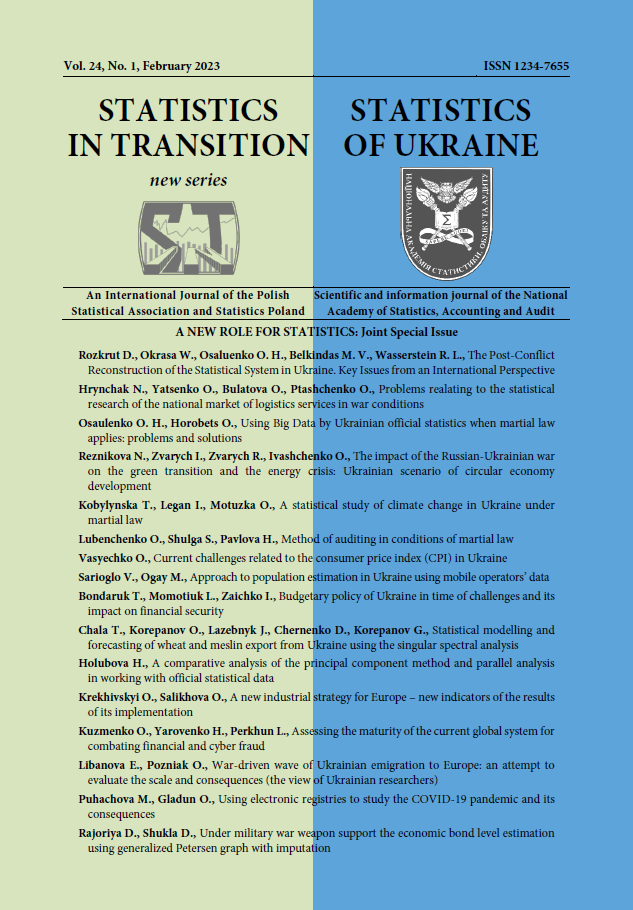ARTICLE
ABSTRACT
Several countries of the world are involved in mutual and collaborative business of military equipments, weapons in terms of their production, sales, technical maintenance, training and services. As a consequence, manufacturing of boms, rockets, missiles and other ammunitions have taken structured and smooth shape to help others where and when needed. Often the military support among countries remain open for information to the media, but sometime remain secret due to the national security and international political pressure. Such phenomenon (hidden or open support ) is a part of military supply chain and could be modeled like a Petersen graph considering vertices as countries and edges as economic bonds. For a large graphical structure, without sampling, it is difficult to find out average economic bonding (open & secret) between any pair of countries involved in the military business or support. This paper presents a sample based estimation methodology for estimating the mean economic bond value among countries involved in the military support or business. Motivation to the problem is derived from current Russia-Ukraine war situation and a kind of hidden support to war by NATO countries. A node sampling procedure is proposed whose bias, mean-squared error and other properties are derived. Results are supported with empirical studies. Findings are compared with particular cases and confidence intervals are used as a basic tool of comparison. Pattern imputation is used together with a new proposal of CIImputation method who has been proved useful for filling the missing value, specially when secret economic support data from involved countries found missing. The current undergoing war between Ukraine and Russia and secret weapon, economic support from NATO countries is an application of the proposed methodology contained in this paper.
KEYWORDS
Graph, Petersen Graph, Estimator, Bias, Mean Squared Error (MSE), Optimum Choice, Confidence intervals (CI), Nodes (vertices), Pattern Imputation, CI-Imputation (LLimputation and UL-imputation), Economic Bonds, Military War, Weapon Support.
REFERENCES
Coxeter, H., (1950). Self-dual configurations and regular graphs. Bulletin of American Math. Soc, 56, pp. 413–455.
Cochran, W. G., (2005). Sampling Techniques. Jhon Willy and Sons.
Donga, J., Bhojak, P., Patel, K. and Shah, S., (2021). An analysis of different computer science algorithms with the graph theory of Mathematics. Reliability: Theory and Methods, vol. 16, pp. 376–383.
Deo, N., (2001). Graph theory with application to engineering and computer science.Eastern Economy Edn. New Delhi, India .
Krnc, M., Pisanshi, T., (2018). Characterization of generalized Petersen graphs that are kronecker covers. arxiv:1802.07134v1[Math.Co].
Rajoriya, D. and Shukla, D., (2020). Optimal estimation strategies of parameters in Hamiltonian circuit type population. Journal of Critical Reviews, 7, pp. 3561–3573.
Rajoriya, D. and Shukla, D., (2021). An optimum resource score estimation method using Bipartite graph model and single node systematic sampling. Reliability: Theory and Methods, vol. 16, pp. 322–338.
Shukla, D., (2002). F-T estimator under two-phase sampling. Metron, 60, pp. 97–106.
Shukla, D., Rajput, Y. S. and Thakur, N. S., (2009). Estimation of spanning tree mean-edge using node sampling. Model Assisted Statistics and Applications, 4, pp. 23–37.
Shukla, D., Rajput, Y. S. and Thakur, N. S., (2010). Edge estimation in population of planer graph using sampling. Journal of Reliability and Statistical Studies, 3, pp. 13–29.
Shukla, D., Rajput, Y. S. and Thakur, N. S., (2014). Edge estimation in the population of a binary tree using node-sampling. Communication in Statistics Theory and Methods, 43, pp. 2815–2829.
Shukla, D., Pathak, S. and Trivedi, S. K., (2016). Graph sampling by Spanning tree under stratified setup. Research and Review: Journal of Statistics, 5, pp. 11–31.
Singh, S., (2003). Advanced Sampling Theory with Applications.Kluwer Academic Publisher, Netherland, Springer, Dordrecht, htttps://doi.org/10.1007/978-94-007-0789-4.
Shukla, D.,Trivedi, S. K., Pathak, S. and Rajoriya, D., (2018). Mean edge estimation in population of Binary tree using stratified sampling procedure. Research and Reviews: Journal of Statistics, 7, pp. 60–73.
Shukla, D., Trivedi, S. K., Pathak, S. and Rajoriya, D., (2019). Mean edge estimation in population of Planar graph using stratified sampling procedure. Research and Reviews: Journal of Statistics, 8, pp. 11–31.
Watkins, M. E., (1969). A theorem on tait colorings with an application to the generalized Petersen graphs Journal of Combination Theory, 6(2), pp. 152–164.
Russia-Ukraine war update: https://www.hindustantimes.com/world-news/russia-ukrainewar- live-updates-may-4-wednesday-day-70-of-war-101651621959042-amp.html
China support to Ukraine, https://www.nytimes.com/2022/03/13/us/politics/russia-chinaukraine. html
Nine big question answered by Russia, https://www.google.com/search?channel=nrow5client=firefox-b-d q=9+big+questions+about+Russia%E2%80%99s+war+in+Ukraine%2C+answered+-+Vox.html
Russia- Ukraine history and conflict, https://www.csis.org/analysis/russias-war-ukraineidentity-history-and-conflict
The independent resource on global security, https://sipri.org/media/press-release/2021/globalnuclear-arsenals-grow-states-continue-modernize-new-sipri-yearbook-out-now
